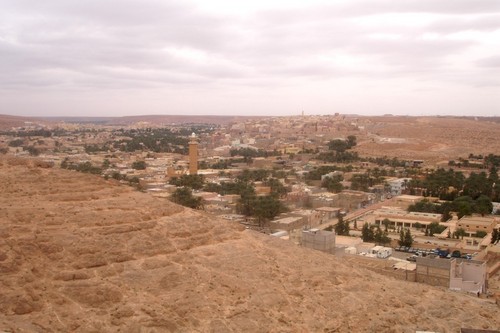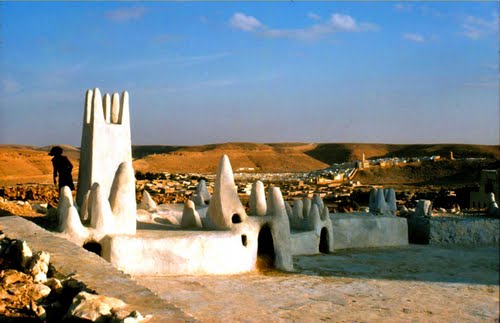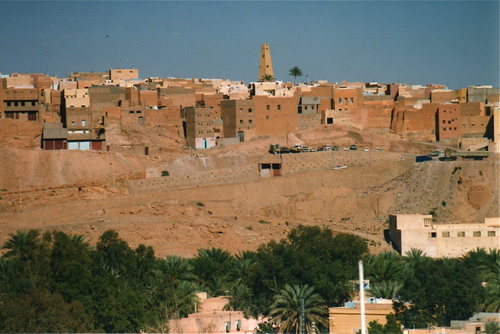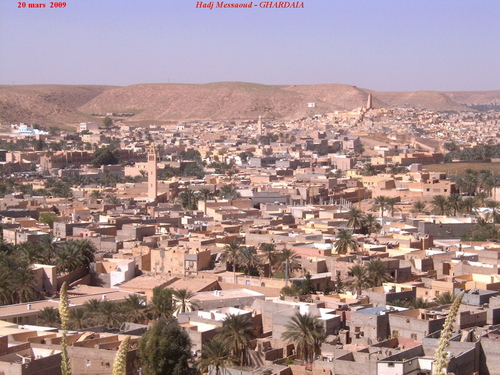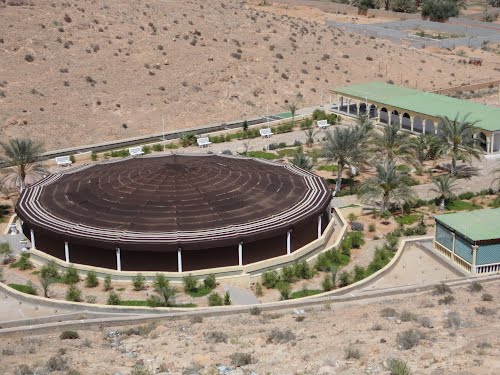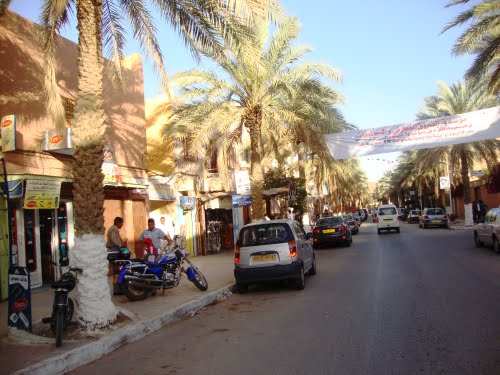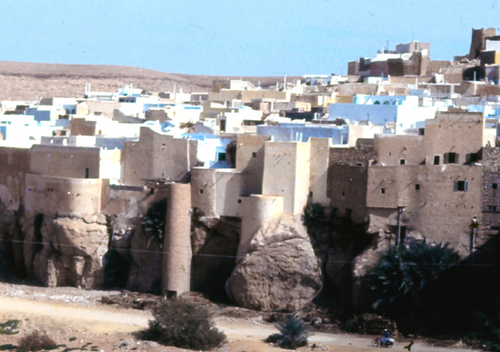Ghardaia is the capital city of Ghardaia Province, Algeria. It is located in northern-central Algeria in the Sahara Desert and lies along the left bank of the Wadi Mzab. The M'zab valley in the Ghardaïa Province was inscribed under the UNESCO World Heritage List in 1982.
Ghardaia is part of a pentapolis, a hilltop city amongst four others, built almost a thousand years ago in the M’Zab valley. It was founded by the Mozabites, a Muslim Ibadi sect of non-Arabic Muslims, including the Berbers. It is a major centre of date production and the manufacture of rugs and cloths. Divided into three walled sectors, it is a fortified town. At the centre is the historical Mʾzabite area, with a pyramid-style mosque and an arcaded square. Distinctive white, pink, and red houses, made of sand, clay and gypsum, rise in terraces and arcades.
History
The M'Zab valley, in limestone plateau, as inscribed under the UNESCO Heritage List, is a unique conglomeration of five cities confined in area of 75 km² situated 600 km to the south of Algiers, the capital of Algeria. Original architecture of the semi desert valley is dated to early 11th century ascribed to the Ibadis with their cultural identity originally traced to the Maghreb who had their capital at Tahert as an Ibadi Kingdom. They were forced to leave Tahert consequent to a devastating fire in 909. They first moved to Sedrata and finally to M'Zab valley. They settled in five fortified villages located on rocky outcrops, known locally as “Kosars”, even though they could have lived in one larger village encompassing all the five, which were planned with meticulous details to precise layouts defined by set principles of community living within a defensive environment. Each village was planned in diverse topography comprising a small island, a ridge, a hilltop, a peak and a recess. The villages were fortified in such a manner that they were inaccessible to the nomadic groups. The five villages set up with identical planning concepts were Ghardaia, Melika, Beni Isguen, Bou Noura and El Atteuf. The identical “miniature citadels” as they are termed had each their own mosque with minaret functioning as watch towers, houses built around the mosque in concentric circles and surrounded by a high walls, which together gave the feel of a fortress to each village. The mosque also provided for storage of grains and arms for defence. However, during the summer season a they migrated to a "citadel" outside the fortified villages, in an informal setting of artificial palm grove, a cemetery and a mosque.



